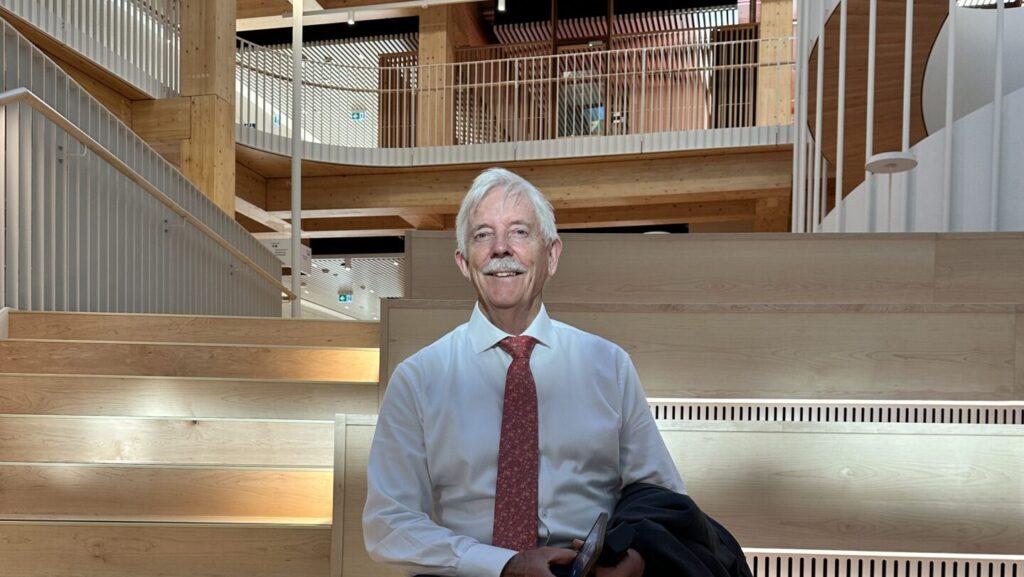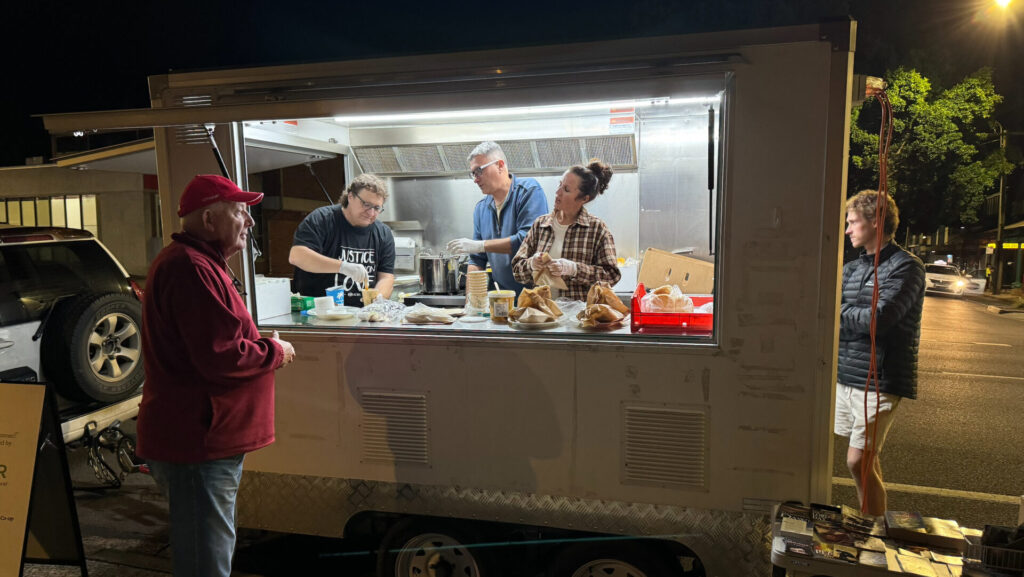I was brought up in an Adventist family where church life was a part of the Samoan culture. You attended church because it was a way of life.
During the ’50s and ’60s, both my parents emigrated from Samoa for a better life in New Zealand, which is where they met.
Growing up in Porirua, Wellington, it was a struggle for my family to survive. My parents knew very little English and, being in a new country, it was super tough for them to assimilate without any support.
The church became a refuge and a support and, most importantly, a family away from the motherland. Much like a village.
To paint you a picture of how we grew up, our neighbourhood was filled with one of the notorious national gangs—the Mighty Mongrel Mob. Our next door neighbours, across and at the rear, were high-ranked leaders (presidents) of the local Porirua chapter. That was pretty much the kind of environment my three brothers and I were brought up in. I was a product of my environment; crime became part of my life.
One of the challenges I faced, like most adolescents, was finding who I was. At home I was torn between three different world views: Samoan, Kiwi and Adventist. In my mind they overlapped and clashed and demanded supremacy. I was Samoan at home, an Adventist at church and a Kiwi in between. My parents didn’t encourage much Fa’asamoa (the Samoan way of life) at home. There were some cultural traditions that were not in line with our Adventist beliefs. I was confused about what a true Samoan was.
What was important to my parents was church and school. I was more attracted to being a Kiwi than the other two conflicting cultures.
As I grew older, I got so frustrated with these conflicting cultures I decided to abandon all three and I adopted a new culture called hip-hop. I could resonate with it—it spoke a language I could not express about what I was experiencing.
The elements of hip-hop are music, the b-boy/girl (breakdancing), graffiti, and DJ-ing. They all attracted me. For the first time in my life, something made sense to me and I knew where I wanted to be.
I became heavily involved in the Aotearoa hip-hop scene well into my early 20s. I belonged to a rap group called Hamofide, produced hip-hop music, breakdanced for fitness and fun. But secretly the artistic side of me had a deep fondness for graffiti art. This was purely a way of life. I had an identity without telling anyone I was a hip-hopper. My graffiti tags became quite well-known around NZ. I was who I was, based on what I did, and I saw the world through the lenses of hip-hop.
Suddenly, out of the blue, the Lord called me. Now that was different! For two weeks, I wrestled with God as though we had never met before. God revealed Himself to me. All that my parents taught me became the basis of God’s call in my life to serve Him fully.
I had no idea what that was going to look like, so I reversed the abandonment. I left it all—hip-hop, everything cold turkey—with just an elementary, family-worship-in-the-home-based knowledge of God. I gave my heart to God because I got tired of wrestling.
For the first five years of my new Adventist life, I became involved in youth-based ministries before leaving my full-time job to serve God as a Bible worker in Australia, North NZ and South NZ for three to four years. This developed my ministry skills in soul-winning.
Yet I felt that this was not enough. I felt depressed, thinking, there must be more to this church life as an Adventist. I started asking myself if there was a better, more creative way to reach people. The methods I was using seemed limited and irrelevant.
The next call God gave me was to head to Avondale College to become a pastor—the last place I wanted to go. One of the reasons I became a Bible worker was that I didn’t want to become a pastor. So it was a delayed response to God’s call. But our God is a patient and gentle Shepherd and He eventually had His way over mine. So we packed up and left for Cooranbong in 2012.
Six years later, I’m now ministering in Christchurch (NZ)—pastoring two amazing Samoan churches. But my story doesn’t end there as God is still teaching me about ministering for Him.
The street art culture in Christchurch is explosive. After the damage wreaked by earthquakes, artists used their talents to tag, paint murals and brighten up the city.
I could not help but be reminded of my old passion. I would actually stop my car on my way to church on Sabbath, walk up to a graffiti and run my hand over it to feel the bumps and layers over layers of a familiar canvas I once used to spend my time on.
Right there and then I knew the answer to my question. There’s a huge underground graffiti culture of street artists—a creative street urban culture that has not been tapped into by any Adventist in our South Pacific Division. Who will go and reach this fast-growing movement?
I began to believe this was one of the reasons God called me to Christchurch—to use a tool that I hadn’t used for a while, that I enjoyed and that I had skills in.

I had doubts. I wrestled with the idea—an unorthodox method like this has its pros and cons. Graffiti has a stigma of vandalism and illegal affiliation . . . to the traditional Adventist this may not seem to be the best method to reach souls for the kingdom.
So I talked with a good friend, a minister, and shared my inspiration as part of our prayer walk life. He said, “Just do it and see what happens . . .” So I did.
I started a movement called “Graphoticz Art Worx” to empower a new generation through urban ministry, where people, especially young people, will creatively express biblical concepts, words and a lifestyle that are gospel-focused and will connect with other graffiti artists and people who love street art around the world.

A graffiti artist is correctly known as a “writer”, and so we decided to form a “crew” of kids between the ages of 12 and 18—the age I was when I decided not to become a Christian.
We called ourselves “WORDwriterz”—graffiti writers of God’s Word—bringing life to those who will read our masterpieces of art on the walls for all the world to see.
I study the Word with these kids and do life with them, training them to serve and learn the disciplines of graffiti art as a life skill. They learn creative thinking and how, through their own creativity, to be innovative in communicating the gospel to others their own age, who are often in trouble with police or who have been caught tagging or doing illegal graffiti. They join this crew to direct their skill to a more positive way and connect with other like-minded kids. A cycle of discipling other kids through graffiti.
Kids like to be cool, so why not take advantage of that “coolness” by drawing them into something more positive and spiritual, leading them to make the most important decision to have a saving relationship with Jesus, the ultimate Creator, through the power of the written word?

I want to revolutionise the way we disciple our kids in the area of urban ministry in our Adventist churches.
Graffiti is one tool, an access point used to seek and save the lost, a part of the larger equation that has Jesus at its centre.
Graffiti is everywhere, whether you notice it or not. You will find it in places and spots you least expect and you wonder, How in the world did they get up there?
It was here in Christchurch I realised and traced back God’s fingerprints from my past. Back then I would never have known that God would have me pull out an old tool to draw the graffiti world, a global movement, to Him.


Imagine if all of our church members dug deeply into what they are most passionate about, until it became a way of life for them to disciple using their gifts and talents. This requires thinking outside of traditional evangelism and reaching people in the most creative and effective ways, winning souls for Jesus in this fast-paced, changing world of the South Pacific.
Tulaga Aiolupotea is founder of Graphoticz Art Worx and co-founder of Wordwriterz, and pastor of Addington Samoan Church.





